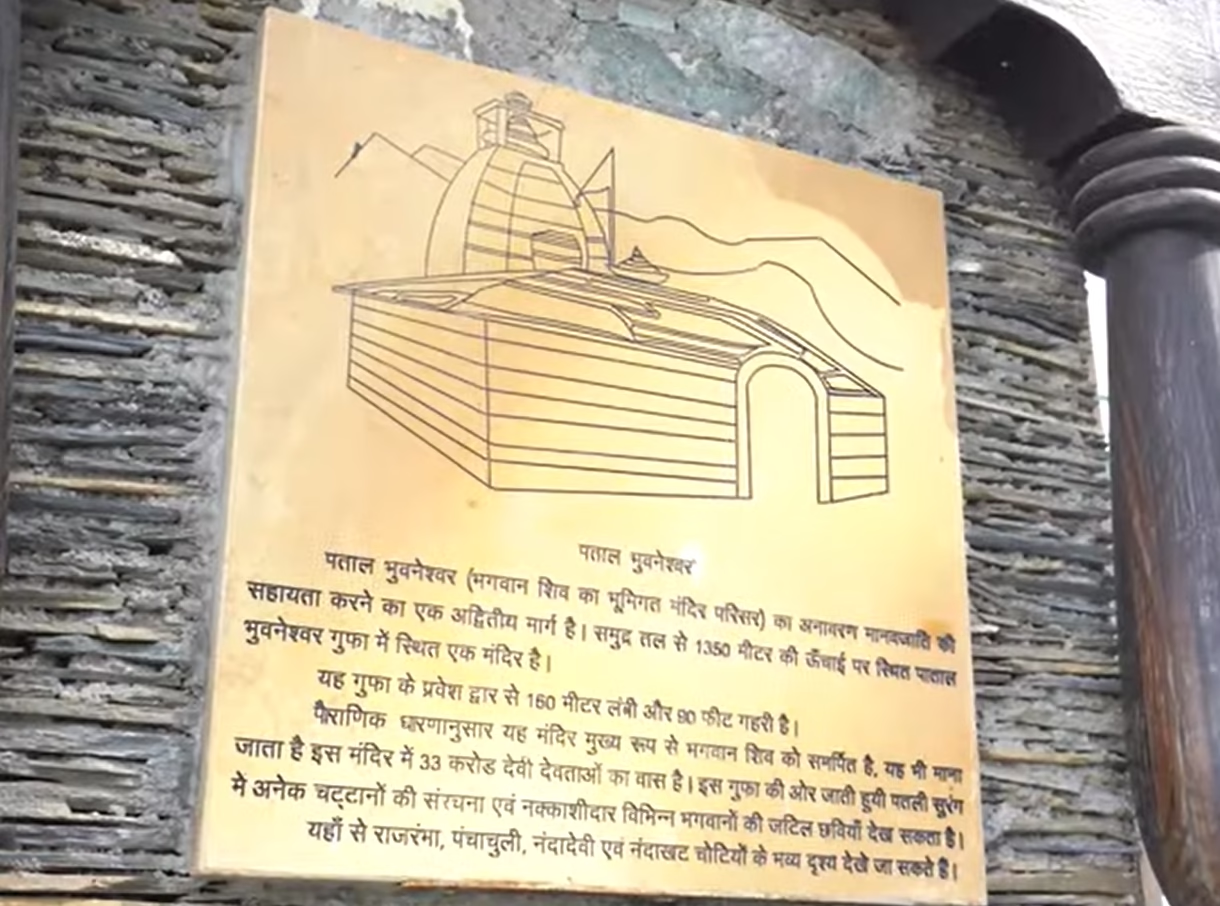Deep in the mountains of Kumaon, there lies a place where earth meets the divine — Patal Bhuvaneshwar. Tucked away in Pithoragarh district of Uttarakhand, this ancient cave temple is one of India’s most mystical and spiritually charged destinations. It’s not just a temple but a world within the earth, where myth, devotion, and mystery blend together.
About Patal Bhuvaneshwar Cave
The Patal Bhuvaneshwar Cave Temple is located near Gangolihat, around 14 km from it, and about 90 km from Almora. The word ‘Patal’ means underground, and ‘Bhuvaneshwar’ refers to Lord Shiva — making it literally “the subterranean abode of Shiva.”
The limestone cave is said to be 160 meters long and 90 feet deep. You enter through a narrow tunnel that opens into a large cavern filled with naturally formed stalactites and stalagmites — many believed to represent gods, goddesses, and mythical beings.
The Myth and Mystery of Patal Bhuvaneshwar
This place is steeped in ancient legends. According to the Skanda Purana, King Rituparna of the Solar Dynasty discovered this cave during the Treta Yuga. Later, Adi Shankaracharya — the great Hindu philosopher — rediscovered it in the 8th century and declared it a sacred pilgrimage site.
Inside the cave, locals say there are 108 small caves connected to it, each leading to different divine realms. The cave formations are said to represent Kailash Parvat, Sheshnag, Yamraj’s gate, and even the four portals of the Hindu pantheon — dedicated to Vishnu, Shiva, Brahma, and Shakti.
Many visitors describe the cave as otherworldly — dimly lit, silent except for the sound of dripping water, and filled with shapes that truly seem alive. It’s no wonder the Patal Bhuvaneshwar cave mystery continues to fascinate both pilgrims and explorers.
Patal Bhuvaneshwar Temple Experience
At the entrance, there’s a small temple dedicated to Lord Shiva. To reach the main sanctum, you need to descend through a steep, slippery tunnel. Guides accompany visitors, explaining the rock formations and their spiritual meanings.
Inside, you’ll find formations that locals identify as:
- Lord Shiva’s matted hair
- Airavat, the elephant of Indra
- Lord Ganesha’s head
- The tongue of Goddess Kali
Photography is not allowed inside the cave, preserving its sacredness and mystery. If you search online, you’ll find many Patal Bhuvaneshwar cave temple photos of the outer temple and scenic surroundings, but the inside remains hidden to preserve its sanctity.
Almora to Patal Bhuvaneshwar Distance
The distance from Almora to Patal Bhuvaneshwar is about 90–95 km, which takes roughly 3–4 hours by road. The route passes through scenic Himalayan villages, pine forests, and viewpoints that overlook deep valleys.
- Route: Almora – Seraghat – Gangolihat – Patal Bhuvaneshwar
- Nearest Town: Gangolihat (14 km away)
- Nearest Railway Station: Kathgodam (about 180 km away)
- Nearest Airport: Pantnagar (around 230 km away)
For those coming from Delhi, the total distance is about 460 km, making it a perfect offbeat destination for a spiritual road trip.
Patal Bhuvaneshwar Cave Open Time
The cave remains open throughout the year, though the best months to visit are March to June and September to November when the weather is pleasant.
- Visiting Hours: 8:00 AM to 6:00 PM (last entry around 5:30 PM)
- Entry Fee: Minimal (₹20–₹50 per person)
- Guide Fee: Around ₹100–₹150 for a small group
During monsoon months, the cave can become slippery, so it’s better to avoid July and August.
Patal Bhuvaneshwar Temperature and Weather
The region enjoys a cool mountain climate.
- Summer (March–June): 15°C to 25°C — perfect for travel.
- Monsoon (July–September): 18°C to 22°C — lush greenery but risky for cave entry.
- Winter (October–February): 5°C to 15°C — cold but peaceful for spiritual seekers.
Even in summer, the cave remains cool from inside due to its depth and natural limestone structure.
Nearby Attractions
If you’re planning a trip of 2–3 days, you can explore nearby destinations along with Patal Bhuvaneshwar:
- Gangolihat: Known for the Hat Kalika Temple dedicated to Goddess Kali.
- Chaukori: A small hill station famous for sunrise views over Nanda Devi peaks.
- Berinag: Surrounded by tea gardens and panoramic mountain views.
- Munsiyari: Around 125 km away, a gateway to high Himalayan treks.
Where to Stay
There are small guest houses and government rest houses near the temple.
For more comfort, you can stay in Gangolihat or Chaukori, both of which have mid-range hotels and homestays with stunning Himalayan views.
Best Time to Visit Patal Bhuvaneshwar
The best time to visit is March to June and September to November. The sky is clear, the temperature mild, and the surrounding landscape at its most vibrant. Winter visits are also peaceful if you can handle the chill.
Why You Should Visit
Patal Bhuvaneshwar is more than a destination — it’s an experience. Whether you believe in the legends or not, the place has a rare energy that leaves a mark on everyone who enters. The cave’s silence, the cold air, and the divine carvings formed by nature itself make you feel connected to something ancient and vast.
FAQs
Q1. What is Patal Bhuvaneshwar famous for?
It’s famous for its underground limestone cave believed to house the presence of all major Hindu deities.
Q2. How deep is the Patal Bhuvaneshwar cave?
The cave extends about 160 meters long and 90 feet deep.
Q3. Is photography allowed inside the cave?
No, photography or videography is not allowed inside the cave.
Q4. How far is Patal Bhuvaneshwar from Almora?
It’s about 90–95 km away from Almora, taking nearly 3–4 hours by road.
Q5. When is the best time to visit?
March to June and September to November are ideal months for comfortable travel and exploration.
Q6. What is the temperature like?
The temperature stays between 5°C and 25°C depending on the season, always cool inside the cave.

